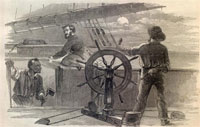A relaxing video for a Saturday afternoon. I’ve long been a fan of Fred LeBlanc’s photography, particularly his photos of schooners. Here is a video of LeBlanc’s photos of scenes from Maine Windjammers fleet. LeBlanc hosts photo sailing adventure aboard the schooner Heritage. His next is scheduled for June 10 – 14, 2017, sailing from Rockland, Maine. Click here to learn more.
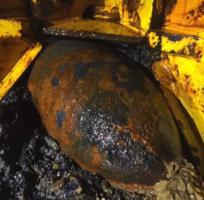 In 2011, a drought lowered the levels of the Rhine River, revealing unexploded munitions from World War II partially buried in the river banks exposed by the falling waters. Now, in Portsmouth harbor in the UK, World War II bombs are also being uncovered, not due to a drought but from dredging. On Wednesday, one of the dredges discovered what is a believed to be a German SC250 bomb, weighing 500 lbs, containing 290 lbs of “high explosives.” The harbor is being dredged to deepen and widen a four-mile channel to allow the the navy’s new 65,000-tonne aircraft carriers to dock. From the Royal Navy website:
In 2011, a drought lowered the levels of the Rhine River, revealing unexploded munitions from World War II partially buried in the river banks exposed by the falling waters. Now, in Portsmouth harbor in the UK, World War II bombs are also being uncovered, not due to a drought but from dredging. On Wednesday, one of the dredges discovered what is a believed to be a German SC250 bomb, weighing 500 lbs, containing 290 lbs of “high explosives.” The harbor is being dredged to deepen and widen a four-mile channel to allow the the navy’s new 65,000-tonne aircraft carriers to dock. From the Royal Navy website:
The entrance to Portsmouth Harbour was closed until around 7.30am as a precaution while the bomb disposal team assessed the swiftest and safest way of removing the device. Divers from the Royal Navy’s Portsmouth-based Southern Diving Unit 2 towed the bomb away from the harbour, lowered it to the seabed, and planted explosive charges for a controlled detonation of the device. Shortly after 11am, it was destroyed in a plume of smoke and spray.
 As Black History Month winds to a close, here is a throwback Thursday repost of a story I think is well worth telling and retelling.
As Black History Month winds to a close, here is a throwback Thursday repost of a story I think is well worth telling and retelling.
Born a slave, Harriet Tubman escaped and would become a leading “conductor” on the “Underground Railroad” which helped slaves escape from bondage in the South to freedom in the North and in Canada, prior to the Civil War. Nicknamed “Moses,” she is said to have made more than nineteen trips back into the slave-holding South to rescue more than 300 slaves. Her greatest rescue mission, however, came when she planned and help lead a Union riverboat raid at Combahee Ferry in South Carolina on the second of June, 1863, freeing over 720 slaves.
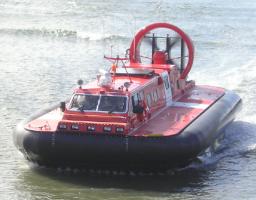 Between 1893 and 1896, the Norwegian explorer Fridtjof Nansen allowed his ship Fram to freeze into the Arctic icepack and attempted to drift with the ice across the North Pole. He came close but ultimately failed in the attempt. Recently, a new expedition was announced which hopes to succeed where Nansen failed. The MOSAiC (Multidisciplinary drifting Observatory for the Study of Arctic Climate) project will endeavor to drift in the ice using the 120m-long German research vessel, the Polarstern, starting in 2019. It is billed as “the biggest single Arctic research expedition ever planned and is expected to cost €63m (£54m; $67m).
Between 1893 and 1896, the Norwegian explorer Fridtjof Nansen allowed his ship Fram to freeze into the Arctic icepack and attempted to drift with the ice across the North Pole. He came close but ultimately failed in the attempt. Recently, a new expedition was announced which hopes to succeed where Nansen failed. The MOSAiC (Multidisciplinary drifting Observatory for the Study of Arctic Climate) project will endeavor to drift in the ice using the 120m-long German research vessel, the Polarstern, starting in 2019. It is billed as “the biggest single Arctic research expedition ever planned and is expected to cost €63m (£54m; $67m).
Another group of scientists has been working on versions of Nansen’s Fram expedition on a much smaller budget. For several years, Yngve Kristoffersen, John K. Hall, and a small team of scientists have been using R/V Sabvabaa, an 11 meter hovercraft, as a mobile Arctic ice drift station. Their first expedition in 2012 was the subject of a critically acclaimed documentary, “North Into the Mist.” (The video is after the page break.)
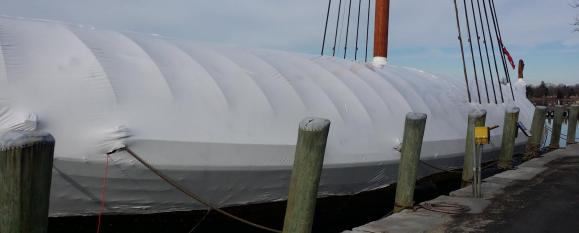 On a recent visit to the Mystic Seaport Museum in Mystic CT, I came across the Viking longship, Draken Harald Hårfagre, tied up alongside a wharf, wrapped in glistening white plastic shrink-wrap, its single mast piercing what looked almost like a ship-shaped mound of snow.
On a recent visit to the Mystic Seaport Museum in Mystic CT, I came across the Viking longship, Draken Harald Hårfagre, tied up alongside a wharf, wrapped in glistening white plastic shrink-wrap, its single mast piercing what looked almost like a ship-shaped mound of snow.
The longship arrived in Mystic last October after an epic voyage across the Atlantic that began in Haugesund, Norway in April, with port calls in Reykjavik, Iceland, Qaqortoq, Greenland and Newfoundland, Canada. The ship then sailed into the Great Lakes as far as Green Bay, Wisconsin before turning around and visiting New York City in September. At 115 foot long, Draken Harald Hårfagre is largest Viking longship built in modern times.
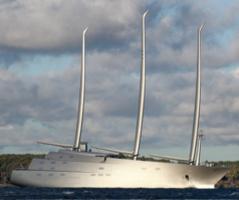 Sailing Yacht A, one of the largest, most technologically advanced and, to my eyes at least, the ugliest, sailing yacht in the world, arrived in Gibraltar recently to be turned over to its owner, Andrey Melnichenko, following extensive sea trials. Not all went as planned. Within hours of its arrival, the futuristic yacht was seized by local authorities.
Sailing Yacht A, one of the largest, most technologically advanced and, to my eyes at least, the ugliest, sailing yacht in the world, arrived in Gibraltar recently to be turned over to its owner, Andrey Melnichenko, following extensive sea trials. Not all went as planned. Within hours of its arrival, the futuristic yacht was seized by local authorities.
Sailing Yacht A, which took four years to build and is reported to have cost €400m, was arrested based on a claim of €15.3m (£13.3m; $16.3m) for unpaid bills, filed by Nobiskrug, the shipyard in Northern Germany, which built the yacht. The yacht is 143m (469ft) long and has three free-standing rotating carbon fiber masts. The main mast is 100m tall. Sailing Yacht A can set 40,330 sq ft of sail, which is 8,000 sq ft greater than sail area on the tea clipper Cutty Sark. The yacht also features eight decks, an underwater observation pod, and hybrid diesel-electric propulsion. Thanks to David Rye for contributing to this post.
 One month ago, French sailor, Armel Le Cléac’h, 39, crossed the finish line at Les Sables d’Olonne, France to win the 8th Vendée Globe. Since then another 10 boats have followed Le Cléac’h across the line. It is a testimony to the enormity of the single-handed around-the-world race that seven of the original 29 to set sail are still racing, in a competition where finishing is a victory in its own right. Even of the original 29 racers withdrew from the race.
One month ago, French sailor, Armel Le Cléac’h, 39, crossed the finish line at Les Sables d’Olonne, France to win the 8th Vendée Globe. Since then another 10 boats have followed Le Cléac’h across the line. It is a testimony to the enormity of the single-handed around-the-world race that seven of the original 29 to set sail are still racing, in a competition where finishing is a victory in its own right. Even of the original 29 racers withdrew from the race.
The closest of the remaining racers is Alan Roura sailing La Fabruque, who is less than 100 nm from the finish, while the farthest is Sebastien Destremau sailing TechnoFirst – faceOcean, who has over 3,000 nm to sail. Rich Wilson, sailing Great American IV, , the oldest sailor in the race at 66, will in all likelihood be the next to follow Roura across the finish line. Roura is the youngest sailor in the Vendee Globe at 23.
 Remember King Harald “Blåtand” Gormsson? No? The king of Denmark and later Norway in the late 10th century. The name still doesn’t ring a bell? His rune mark is embedded in your phone and possibly your earbuds and speakers. His nickname, “Blåtand,” means “Bluetooth” in English.
Remember King Harald “Blåtand” Gormsson? No? The king of Denmark and later Norway in the late 10th century. The name still doesn’t ring a bell? His rune mark is embedded in your phone and possibly your earbuds and speakers. His nickname, “Blåtand,” means “Bluetooth” in English.
King Harald Bluetooth’s claim to fame is that he united Denmark and Norway. When Intel engineer, Jim Kardach, was working on a new wireless technology he was also reading a book about Viking history. He decided to name the new technology after the Danish king. Kardach was later quoted as saying, “Bluetooth was borrowed from the 10th-century, second king of Denmark, King Harald Bluetooth; who was famous for uniting Scandinavia just as we intended to unite the PC and cellular industries with a short-range wireless link.”
The Bluetooth symbol adopted for short-range wireless communications is made of King Harold Bluetooth’s initials, B and T in Viking runes.

USS James Madison
A Russian spy ship lingering off the US coast has been in the news recently. Within the last day or so, the spy ship Viktor Leonov was hanging out off the US Navy submarine base at New London. (The ship has apparently now shifted to Norfolk.) The Navy has dismissed the importance of the spy ship. More threatening, however, may be submarines waiting underwater to follow US submarines from their bases. In some cases, high-stakes games of underwater “chicken” have been reported. A recent release of documents by the CIA has confirmed a previously top-secret report of a collision between a US and a Soviet nuclear submarine off Scotland 43 years ago.
A post in honor of Black History Month. On Throwback Thursday, a slightly revised post from July, 2011.
William Tillman was the first black hero of the American Civil War. He was not a soldier but rather a 27-year-old cook-steward on the schooner S.J. Waring. On July 7, 1861, the schooner was captured by the Confederate privateer Jefferson Davis while about 150 miles from Sandy Hook, New York. Captain Smith, the master of the S.J. Waring was taken aboard the Jefferson Davis, and a five man prize crew was put aboard the schooner, with orders to sail her to a Southern port where the ship and her cargo would be sold.
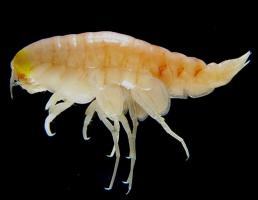
Photo: Dr. Alan Jamieson
There appears to be no limit to the man-made pollution of the oceans. Toxic chemicals have now been found in the deepest portions of the ocean, at the bottom of the Marianas and Kermadec trenches. Each trench is over 10 kilometers deep and 7,000 kilometers apart in the Pacific Ocean. A study based on expeditions led by Newcastle University’s Dr Alan Jamieson found high levels of polychlorinated biphenyls (PCBs) and polybrominated diphenyl ethers (PBDEs) in the fatty tissues of amphipods, a crustacean, in the trenches. PDBs and PBDEs were banned in the 1970s after they were determined to be carcinogenic. These chemicals are classed as Persistent Organic Pollutants – or POPs, because they are highly resistant to natural degradation and can persist in the environment for decades.
In a press release, Dr Jamieson, said, “We still think of the deep ocean as being this remote and pristine realm, safe from human impact, but our research shows that, sadly, this could not be further from the truth. In fact, the amphipods we sampled contained levels of contamination similar to that found in Suruga Bay, one of the most polluted industrial zones of the northwest Pacific. What we don’t yet know is what this means for the wider ecosystem and understanding that will be the next major challenge.”

Frederick Douglas
Frederick Douglass never knew his birthday but he chose to celebrate it every year on February 14th. So happy Frederick Douglass’ birthday and a most joyous Valentine’s Day.
Frederick Douglass was born a slave around 1818. He taught himself to read and write and at 20 years of age, escaped to freedom. He would become known worldwide as a gifted orator, author and editor and as a leader of the abolitionist movement. He was a severe critic of President Lincoln and also a close adviser. He would help recruit black soldiers to fight for the Union in the Civil War and, after the war, would fight against Jim Crow laws in the South and for women’s suffrage and immigrant’s rights. Frederick Douglass is an American hero, of his time and of ours.
From an early age, Douglass developed a close attachment to ships and the sea. His path to freedom led directly through the docks and shipyards of Baltimore, Maryland. Continue reading
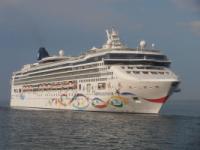 Azipods strike again. The Norwegian Star, operated by Norwegian Cruise Lines, was towed into Melbourne, Australia over the weekend after losing propulsion when the ship’s azipods failed, leaving the ship adrift last Friday. In the latest round of failures, the ship’s Azipods have been breaking down on cruises since December, which has limited the ship’s speed and resulted in cancelled port calls.
Azipods strike again. The Norwegian Star, operated by Norwegian Cruise Lines, was towed into Melbourne, Australia over the weekend after losing propulsion when the ship’s azipods failed, leaving the ship adrift last Friday. In the latest round of failures, the ship’s Azipods have been breaking down on cruises since December, which has limited the ship’s speed and resulted in cancelled port calls.
Pod failures have been a chronic problem on the Norwegian Star. The sixteen year old ship has had intermittent problems with its Azipod propulsion system for at least the last 12 years, dating back to 2004. Pod failures persisted through 2006 and then reemerged in 2015 and have continued despite NCL efforts to repair the pods.
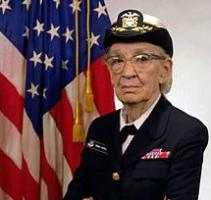 Yale University has announced that it is renaming Calhoun College the Grace Hopper College in honor of Grace Murray Hopper. The University decided to change the name of the residential college which had been named after John C. Calhoun, who attended Yale in 1804 and was also a white supremacist and vocal advocate of slavery. Grace Hopper was a pioneering computer scientist and a United States Navy Rear Admiral. Hopper received both a masters degree and a PhD in mathematics from Yale. She was nicknamed “Amazing Grace” and is often referred to as the “mother of computing.”
Yale University has announced that it is renaming Calhoun College the Grace Hopper College in honor of Grace Murray Hopper. The University decided to change the name of the residential college which had been named after John C. Calhoun, who attended Yale in 1804 and was also a white supremacist and vocal advocate of slavery. Grace Hopper was a pioneering computer scientist and a United States Navy Rear Admiral. Hopper received both a masters degree and a PhD in mathematics from Yale. She was nicknamed “Amazing Grace” and is often referred to as the “mother of computing.”
In September, 2016, the U.S. Naval Academy announced that it will name its future cyber building after Grace Hopper. The cyber facility, which will be called Hopper Hall, will be the first building named after a woman at the three main service academies.
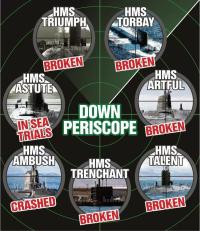
Graphic: The Sun
On Friday, the British tabloid The Sun reported that the Royal Navy’s entire fleet of seven attack submarines was out of service. They wrote: “Repairs and maintenance to all seven have left none to defend our waters — or monitor Russia’s relentless probes….Sources say the Navy’s three new Astute class subs, costing £1.2 billion each, are beset by problems. And the four remaining Trafalgars are said to be “on their last legs”.”
The UK’s Vanguard ballistic missile submarines, which carry Trident nuclear missiles, are reported to be in operation but according to the newspaper, it is the first time in decades the Royal Navy has no attack submarines ready.
By Friday afternoon, the UK’s Ministry of the Defense (MoD) was denying the reports, saying that they were “categorically not true.” That is also about all that the MoD would say. Which submarines were in service and where was understandably a secret. “Where they might be is clearly sensitive operational information that the MOD will not comment on.”
Over 400 pilot whales became stranded after they swam into the shallow waters of Golden Bay, near Farewell Spit, at the northernmost tip of the South Island of New Zealand. An estimated 300 of the whales have died, as a small army of rescuers frantically work to save the rest.
The whale stranding was the largest in the country since 1985, when 450 whales were stranded near Auckland. Worldwide, every year, up to 2,000 cetaceans beach themselves. New Zealand has one of the highest rates of whale strandings. No one knows what causes whale strandings but some theorize that they may be due to navigational mistakes while chasing prey, escaping predators or trying to protect sick members of the group.
At least 300 whales found dead in mass stranding on New Zealand beach
Thanks to David Rye for contributing to this post.
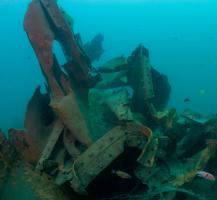
Remains of Rice Bowl Wreck
Last November, we posted about the wrecks of three Dutch World War IIship wrecks in the Java Sea that have apparently vanished. The three ships; the HNLMS De Ruyter, HNLMS Java and HNLMS Kortenaer; had been in waters 70 meters deep, 60 miles off the Indonesian coast. Now, two of the three wrecks have disappeared, while a significant portion of the third is missing. Illegal scrappers operating grabs from barges are considered to be the likely culprits.
Now, the Guardian reports that the wrecks of three Japanese transport ships sunk off Borneo during World War II have been largely destroyed by a Chinese crane ship engaging in illegal scrapping. The ships; Kokusei Maru, Higane Maru and Hiyori Maru; were all within a kilometer of each other and have been popular dive sites in Malaysia’s Sabah state.
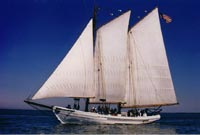
A.J. Meerwald
Two fine schooners are looking for crew. The A.J. Meerwald is looking for various crew and staff positions. A.J. Meerwald was built in 1928 as a Delaware Bay oyster schooner and is New Jersey’s official Tall Ship. A.J. Meerwald is operated by the Bayshore Center at Bivalve for onboard educational programs in the Delaware Bay near Bivalve, and at other ports in the New Jersey, Pennsylvania, and Delaware region. They are looking for a Shipboard Program Coordinator, an Assistant Shipboard Program Coordinator, a Chief Mate, a Cook, Educator/Deckhands and Spring, Summer & Fall Interns. Click here to learn more.
In New York State, the Lake Champlain Maritime Museum has numerous crew positions open aboard the replica 1862 Canal Schooner Lois McClure. Based on the archaeological remains of shipwrecks Lois McClure was built and launched in Burlington, Vermont. For the past 13 years she has been traveling the northeast, interpreting the shared history along the inland waterways. From the museum’s job posting: Continue reading
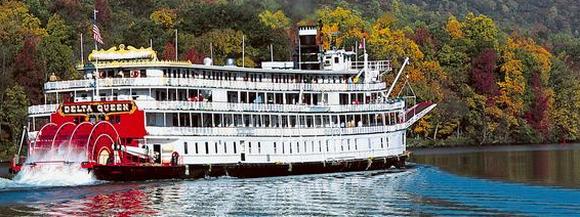 Is the classic 1927-built stern-wheel steamboat Delta Queen a national treasure or a not safe enough to operate? The ship does not meet current safety standards as established by the Safety of Life at Sea (SOLAS) regulations. A series of rolling two to four year exemptions had allowed the riverboat to operate from 1968 to 2007, despite not meeting the rules. After being laid up since 2008, there is now an effort underway to pass legislation to provide a new exemption to allow the venerable old boat to be put back into service.
Is the classic 1927-built stern-wheel steamboat Delta Queen a national treasure or a not safe enough to operate? The ship does not meet current safety standards as established by the Safety of Life at Sea (SOLAS) regulations. A series of rolling two to four year exemptions had allowed the riverboat to operate from 1968 to 2007, despite not meeting the rules. After being laid up since 2008, there is now an effort underway to pass legislation to provide a new exemption to allow the venerable old boat to be put back into service.
The concerns about safety are real. In an interview with the Post-Dispatch, Coast Guard Admiral Paul Zukunft addressed issues related to fire safety, access and vessel condition. Currently the Delta Queen’s boilers, which date to 1926, are exposed to bare wood, for example. He also was concerned that there’s only one way on and off the boat. He commented on how little work has been done to get the boat up to date.
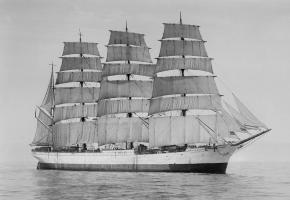 Given that so much of what is happening in the world today seems like a shipwreck, it seems appropriate to post a very well done short documentary of the wreck of the great four-masted steel barque the Herzogin Cecilie, which grounded off south Devon on April 25, 1936, the last windjammer to be wrecked on the English coast.
Given that so much of what is happening in the world today seems like a shipwreck, it seems appropriate to post a very well done short documentary of the wreck of the great four-masted steel barque the Herzogin Cecilie, which grounded off south Devon on April 25, 1936, the last windjammer to be wrecked on the English coast.
In her day, Herzogin Cecillie was considered to be the most beautiful and may have been the fastest windjammer ever built, once clocking over 20 knots over a measured course between two lightships. The barque, named after German Crown Princess Duchess Cecilie of Mecklenburg-Schwerin, was also the winner of eight grain races, the annual races between Australia and Great Britain, carrying the yearly grain harvest.
In 1936, Herzogin Cecillie had just completed a voayage from Port Lincoln in South Australia to Falmouth in 86 days, beating all her competition. From Flamouth she sailed for Ipswich in dense fog and on April 25, 1936 ran aground on Ham Stone Rock and drifted onto the cliffs of Bolt Head on the south Devon coast.

